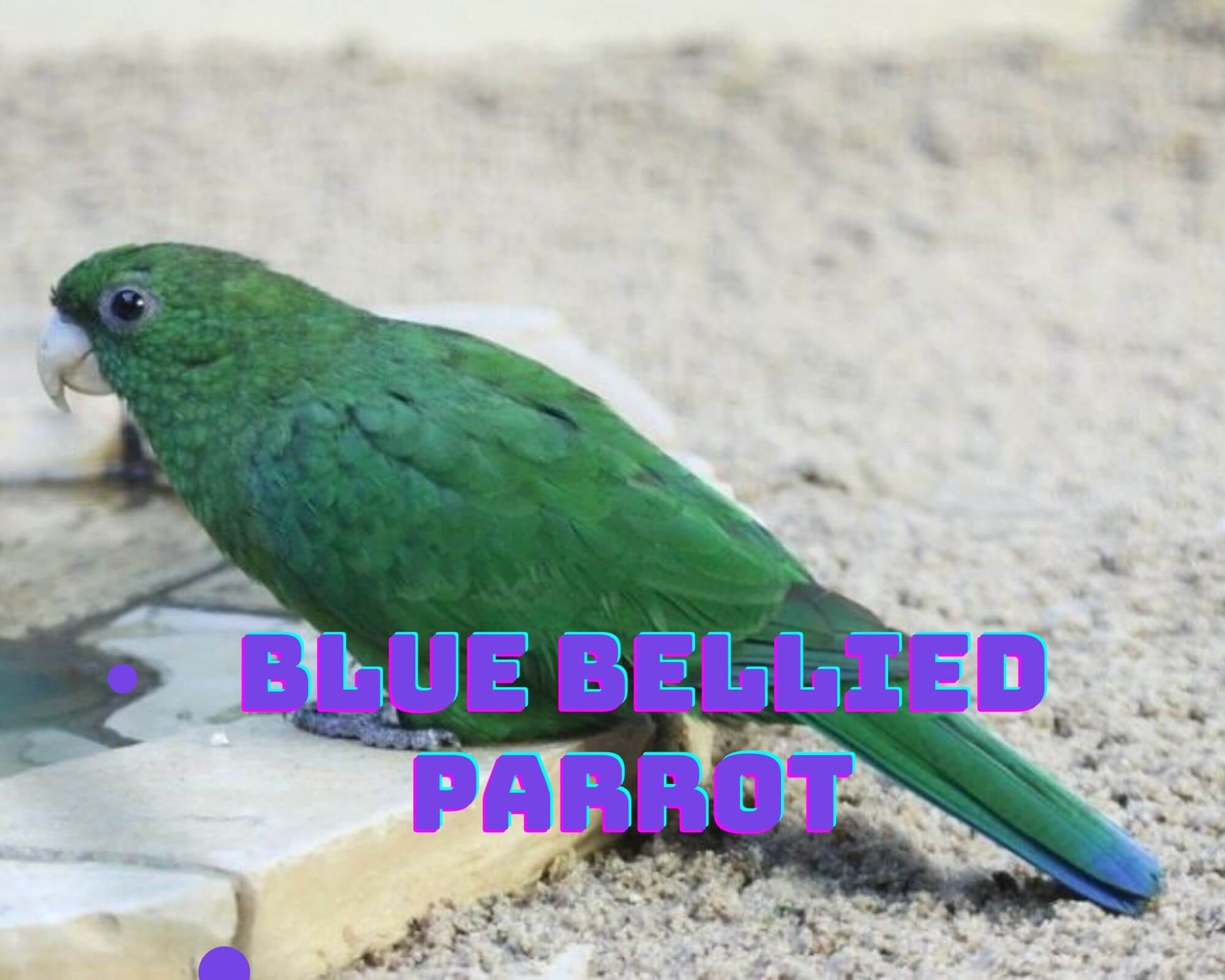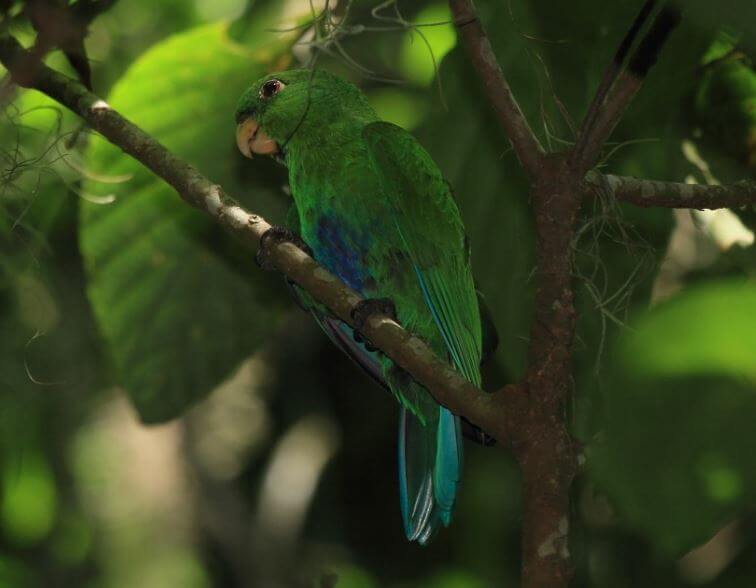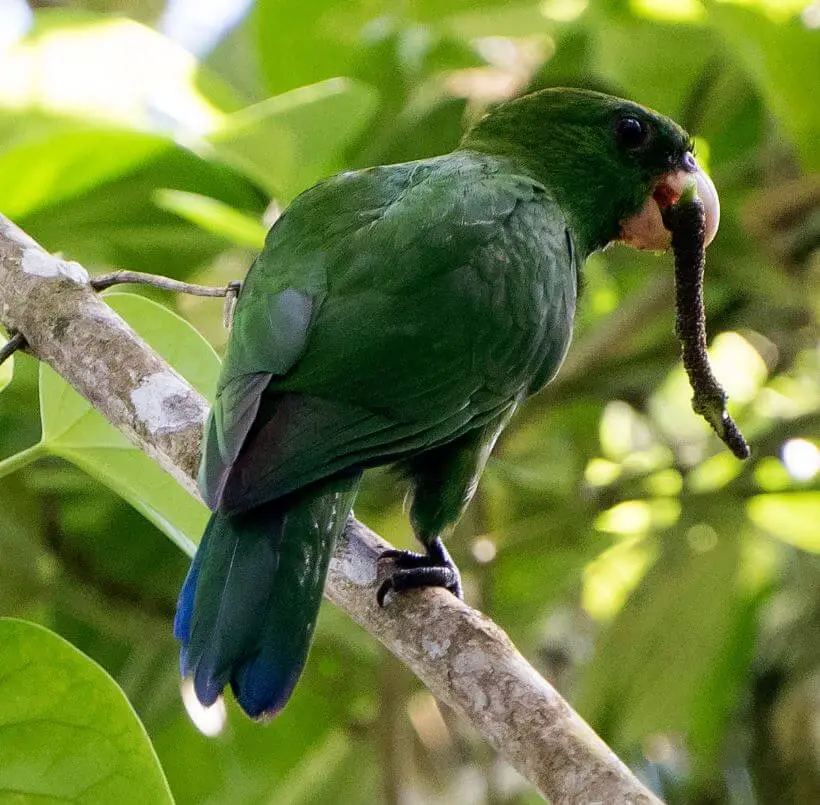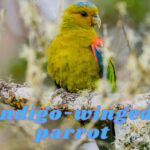
Blue-bellied Parrot 28 cm; 110–155 g. Green throughout, except for deep blue patch from lower breast to the abdomen, bluish-green in flight- and tail -feathers, and whitish bill and periocular region.

Blue-bellied Parrot
Female lacks blue on the belly. Immature like a female, though male shows some blue on the belly.
Systematics History
Monotypic.
Subspecies
Monotypic.
Distribution
SE Brazil from Espírito Santo to Rio Grande do Sul; old records from Bahia, and two unconfirmed reports from NE Argentina (Misiones).
Habitat
Lower montane and escarpment humid broadleaf Atlantic forest, 300–1000 m, usually being found in the canopy of tall, bromeliad-rich forest along watercourses in valleys, but entering lowland forest and sometimes plantations, orchards, and even suburban woodlands.
Movement
Downslope displacements were reported to occur in winter, but are now known to be year-round residents.
Diet and Foraging
In the Rio Grande do Sul, seeds, and pulp of many native plants, notably from Euphorbiaceae, such as Pachystroma longifolium, Actinostemon concolor, and Sebastiana brasiliensis, and, in the understorey, Myrtaceae, mainly Eugenia rostrifolia and Campomanesia xanthocarpa, plus cultivated maize.

Blue-bellied Parrot
Elsewhere fruits, including epiphytic cacti, seeds of Psidium, araucaria nuts, flowers of Aechmea ornata, nectar, buds, and perhaps insects, birds also venturing into orchards to take oranges and jabuticaba fruit or seeds.
Captive birds were also seen to take bark, leaves, algae growing on wood. Reported penchant for fruits of the palm Euterpe edulis now known to be untrue.
Sabiá-cica / Blue-bellied Parrot / Triclaria malachitacea
SOURCE: Marco Cruz
Sounds and Vocal Behavior
A variety of rather un parrot-like burry whistles, some rather like the song of thrush (Turdus). Other individuals sometimes respond with a short “chin-chin”.
Also a fast, harsh chattering “che-che-che-che-che”, especially on take-off. Flight call a thin, rather high-pitched “chee .. chee”.
Breeding
Aug–Feb. Nest in a natural hollow in an old large tree, often a palm trunk, often relatively low down (3–5 m in three cases); birds strongly territorial, and nests may be as much as 2 km apart.
Blue-bellied Parrot
SOURCE: Jan Dolphijn
In captivity: 2–4 eggs; incubation timed at 28 days; nestling period unknown, but dependence on parents continuing for three weeks after fledging.
Conservation Status
Not globally threatened. Currently considered Near Threatened, and previously Endangered. CITES II. “restricted-range” species.

Generally uncommon, apparently being both patchily distributed and at low densities within patches; however, also highly unobtrusive unless the distinctive voice is known, so status is hard to establish.
Judged rare in Paraná, but with a maximum of 10,000 individuals in CE Rio Grande do Sul. Suffering from general habitat clearance in many areas, plus hunting for food (notably in winter when in more populated areas), compounded by a moderate amount of trade.
In Brazil recorded from Sooretama, Augusto Ruschi and Duas Bocas Biological Reserves (Espírito Santo), Desengano State Park and Serra do Tinguá Biological Reserve (Rio de Janeiro), Serra da Bocaína National Park, Boracéia Biological Station, Intervales State Park , and Carlos Botelho,
Alto Ribeira, Juréia, Jacupiranga and Ilha do Cardoso State Parks (São Paulo), and Aparados da Serra National Park (Rio Grande do Sul); in Argentina, has been recorded in Iguazú National Park and Urugua-í Natural Reserve.
The main strongholds are Intervales and Botelho, plus the escarpment forests of Rio Grande do Sul, where protected areas, sustainable forest management programs, and education initiatives are urgently needed.




















